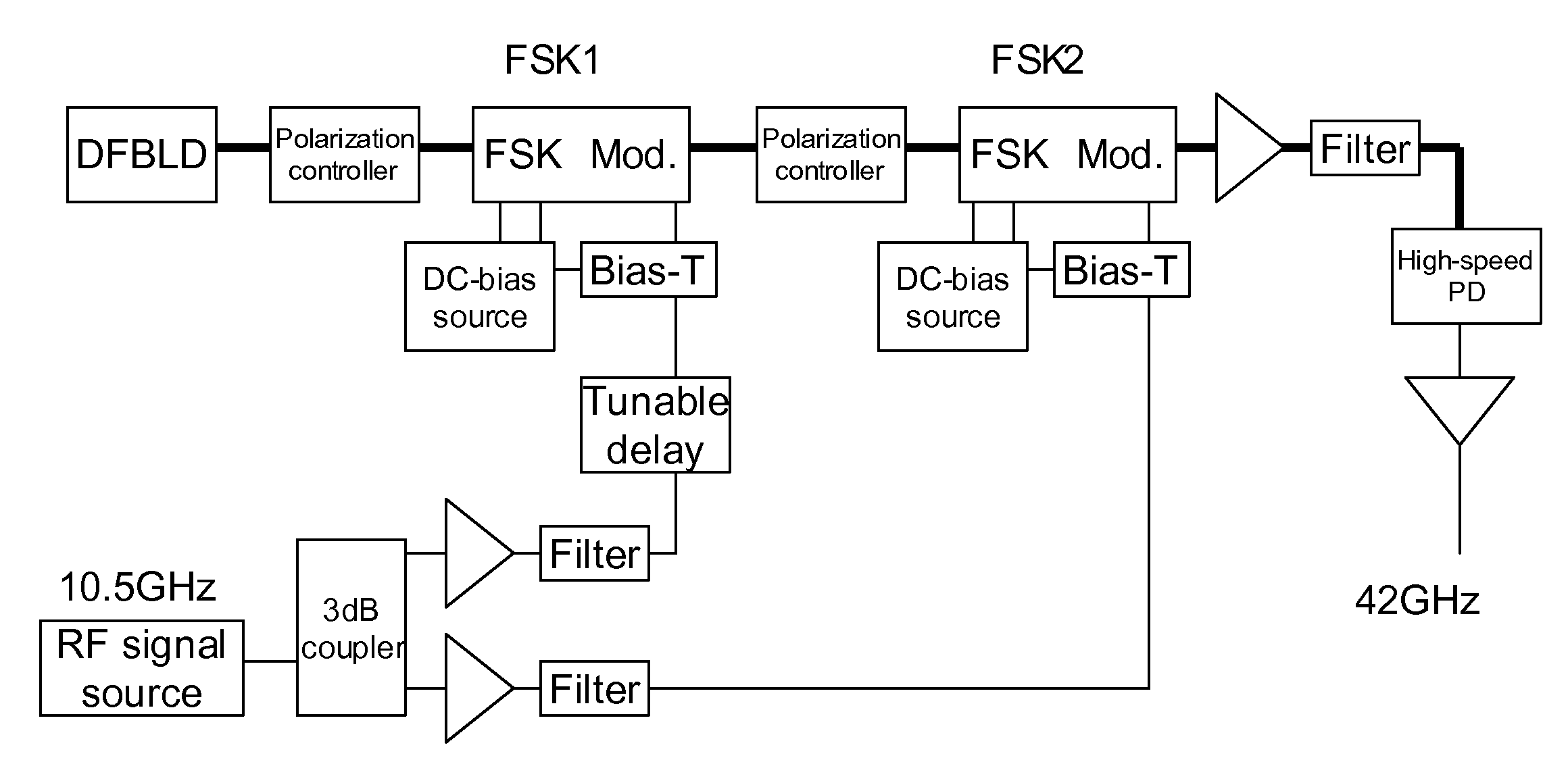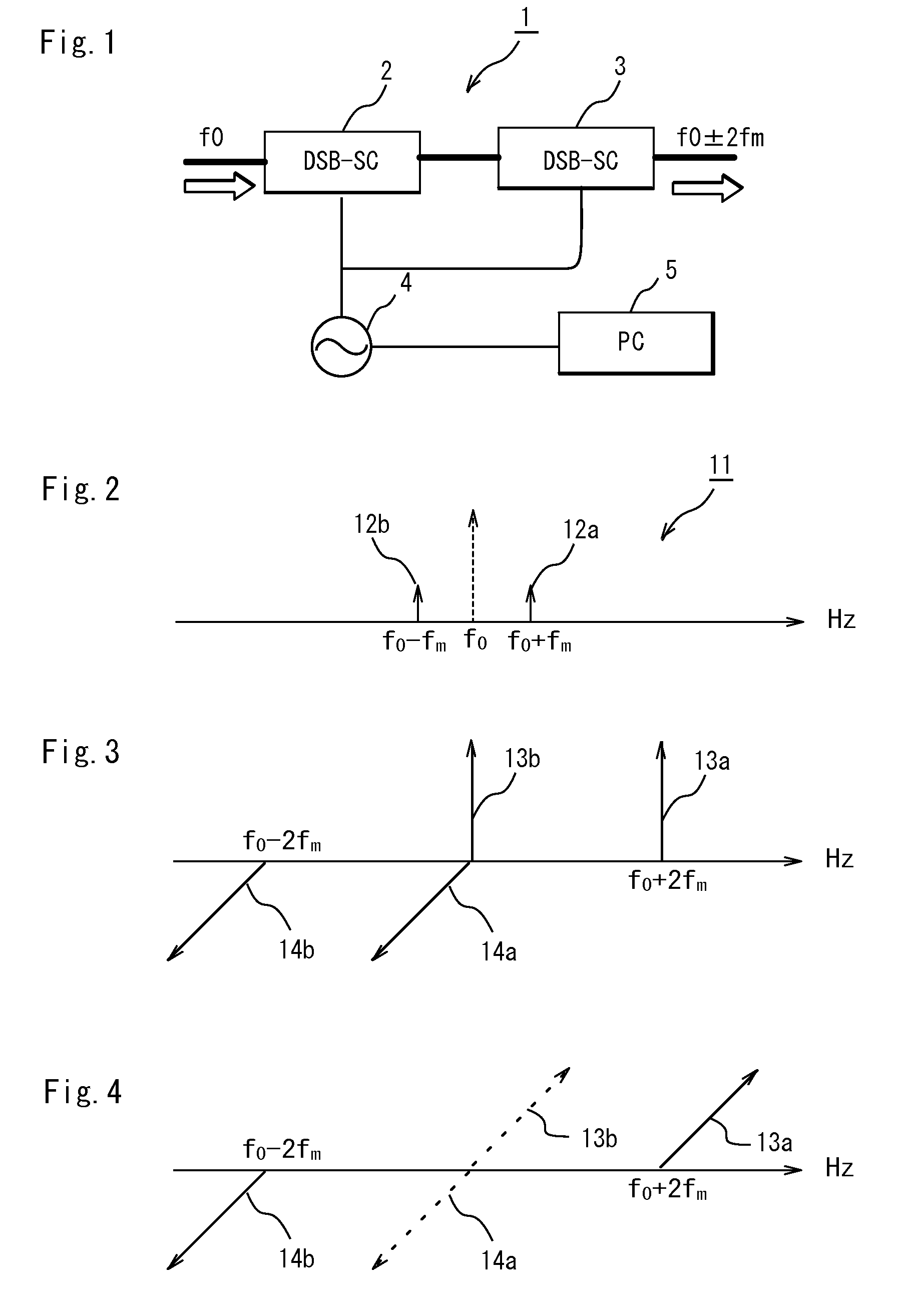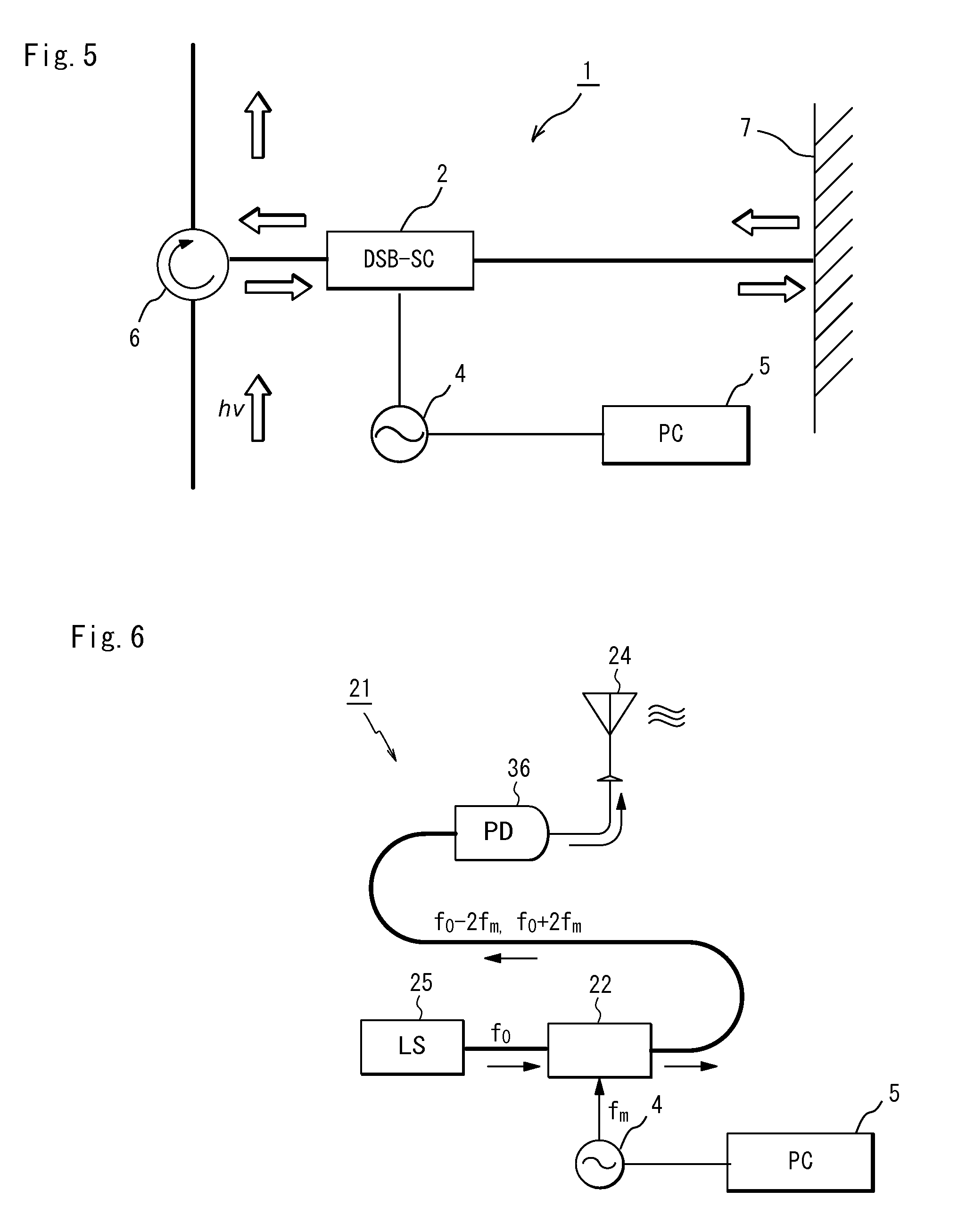Fourth harmonic generating system using optical double side-band suppressed carrier modulator
a carrier modulator and optical double sideband technology, applied in the field of fourth harmonic generating system using optical double sideband suppressed carrier modulator, can solve the problem of limited frequency difference between usb signal and lsb signal
- Summary
- Abstract
- Description
- Claims
- Application Information
AI Technical Summary
Benefits of technology
Problems solved by technology
Method used
Image
Examples
embodiment 1
[0113]Hereinafter, the present invention is explained referring to an embodiment. FIG. 7 is a block diagram showing a system of the present embodiment. In FIG. 7, DFBLD represents a distributed-feedback laser diode, PC represents a polarization controller, FSK Mod. represents an optical frequency-shift keying modulator as a DSC-SC modulator, DC-bias source represents a source of DC bias voltage applied to an optical frequency-shit keying modulator, RF signal source represents a radio frequency signal source as a modulating signal source, Tunable delay represents a variable delay device for providing an arbitrary time difference between modulating signals of the two optical modulators, High-speed PD represents a high-speed optical detector, and triangles in the figure represent any amplifier. Modulating frequency of 10.5 GHz was used. Frequency of output signal from the high-speed optical detector was 42 GHz.
[0114]FIG. 8 is a spectrum diagram showing an output from the second modulat...
embodiment 2
Demonstration Experiment of the Principle of High Extinction Ratio (On / Off) by Using a FSK modulator
[0118]FIG. 11 is a schematic diagram showing an experimental system used in this experiment. In this example, an optical modulator as shown in FIG. 12 is used, and an RF signal and a DC signal are applied to an RFA electrode A and an RFB electrode B which are sub MZ waveguide electrodes. An intensity modulator with high extinction ratio is realized by adjusting an intensity balance between the arms of the main MZ by using the sub MZ of the FSK modulator. A DC bias was applied to the RFA electrode A the RFB electrode B, and the balance was adjusted. On-off switching was performed on the RFC electrode C.
[0119]The following elements are used in the experimental system. As an optical source, the combination of HP8166A and 81689A, respectively produced by Agilent Co., was used. The setting value was 1550 nm, and the observed value was 1549.925 nm. The setting value of intensity was 5.94 dB...
embodiment 3
1. DSB-SC Modulation Using High Extinction Ratio On-Off by FSK Modulator
[0127]An improvement of a carrier suppression ratio at a time of DSC-SC modulation was attempted by adjusting an intensity balance between the arms of the main MZ by using the sub MZ of FSK modulator, and realizing an intensity modulator with high extinction ratio. By doing this, it is shown that an optical FSK modulator can be used as a DSB-SC modulator.
[0128]In the experimental system of embodiment 3, the following elements were used. As an optical source, the combination of HP8166A and 81689A, respectively produced by Agilent Co., was used. The setting value was 1550 nm, and the observed value was 1549.925 nm. The setting value of intensity was 5.94 dBm, and the observed value was 2.68 dBm. An output light was inputted to the FSK modulator via a polarization controller. As a bias power source, three R6144s, produced by Advantest Co. were used. As an optical modulator, T.SBX1.5-10-AOC-P-F...
PUM
| Property | Measurement | Unit |
|---|---|---|
| frequency | aaaaa | aaaaa |
| center frequency | aaaaa | aaaaa |
| center frequency | aaaaa | aaaaa |
Abstract
Description
Claims
Application Information
 Login to View More
Login to View More - R&D
- Intellectual Property
- Life Sciences
- Materials
- Tech Scout
- Unparalleled Data Quality
- Higher Quality Content
- 60% Fewer Hallucinations
Browse by: Latest US Patents, China's latest patents, Technical Efficacy Thesaurus, Application Domain, Technology Topic, Popular Technical Reports.
© 2025 PatSnap. All rights reserved.Legal|Privacy policy|Modern Slavery Act Transparency Statement|Sitemap|About US| Contact US: help@patsnap.com



